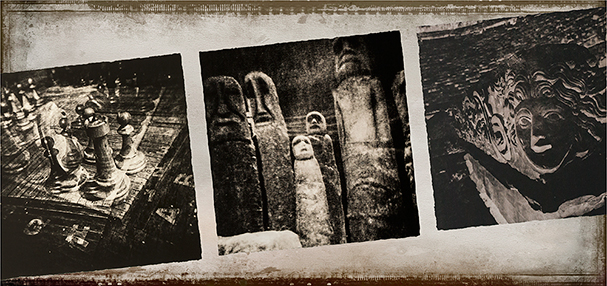2014-2018 © Neolithic Darkroom | All Rights Reserved

General Info
The artworks are printed, numbered, signed and embossed on the front and stamped on the back by the author.
A Certificate of Authentication is enclosed.
The prints are mounted and matted using acid-free materials. The prints are not framed.
Price
The price is provided on request.
International Shipping
The prints ship worldwide from Moldova, and the shipping cost is provided on request.
Packaging
The item is packaged according to the standard artworks packaging guidelines and ships in a cardboard box to ensure its safe arrival.
The print is wrapped in acid-free and lignin-free archival glassine paper. The inner protective corners are also made of glassine paper. The wrapped print is taped to a sheet of foam board slightly larger than the painting for a firm backing.
To protect against moisture, the glassine-covered artwork is wrapped with plastic sheeting and sealed.
The wrapped artwork is put between two pieces of foam board, forming a "sandwich". The foam board sandwich is bound together with use of packing tape and reinforced with cardboard corners. The sides are taped down firmly to ensure that the artwork does not shift around within.
The foam board-covered artwork is placed into a larger cardboard box. The empty space is filled with bubble wrap to ensure that the artwork does not shift during transit. The box is sealed completely shut with packing tape, reinforcing the corners.
The shipping label and the ready-made "FRAGILE" label are taped to the mailer.
General Care and Handling of Photographs
Taking care when handling any collection item is one of the more effective, cost-efficient, and easily achieved preservation measures.
Take proper care when handling photographic materials by:
The artworks are printed, numbered, signed and embossed on the front and stamped on the back by the author.
A Certificate of Authentication is enclosed.
The prints are mounted and matted using acid-free materials. The prints are not framed.
Price
The price is provided on request.
International Shipping
The prints ship worldwide from Moldova, and the shipping cost is provided on request.
Packaging
The item is packaged according to the standard artworks packaging guidelines and ships in a cardboard box to ensure its safe arrival.
The print is wrapped in acid-free and lignin-free archival glassine paper. The inner protective corners are also made of glassine paper. The wrapped print is taped to a sheet of foam board slightly larger than the painting for a firm backing.
To protect against moisture, the glassine-covered artwork is wrapped with plastic sheeting and sealed.
The wrapped artwork is put between two pieces of foam board, forming a "sandwich". The foam board sandwich is bound together with use of packing tape and reinforced with cardboard corners. The sides are taped down firmly to ensure that the artwork does not shift around within.
The foam board-covered artwork is placed into a larger cardboard box. The empty space is filled with bubble wrap to ensure that the artwork does not shift during transit. The box is sealed completely shut with packing tape, reinforcing the corners.
The shipping label and the ready-made "FRAGILE" label are taped to the mailer.
General Care and Handling of Photographs
Taking care when handling any collection item is one of the more effective, cost-efficient, and easily achieved preservation measures.
Take proper care when handling photographic materials by:
•
having clean hands and wearing 100% cotton gloves;
•
having a clean work area;
•
keeping food and drink away;
•
not marking photographs, even on the back side;
not using paper clips or other fasteners to mark or organize prints;
not using paper clips or other fasteners to mark or organize prints;
•
not using rubber bands, self-adhesive tape, and/or glue
on photographic materials.
General Guidelines for Proper Storage of Photographs
Good storage is arguably the most important preservation measure for photographic prints:
Good storage is arguably the most important preservation measure for photographic prints:
•
a relatively dry (30-40% relative humidity), cool (room
temperature or below), clean, and stable environment (avoid attics, basements, and other locations
with high risk of leaks and environmental extremes);
•
minimal exposure to all kinds of light; no exposure to
direct or intense light;
•
distance from radiators and vents;
•
minimal exposure to industrial (particularly
sulfur-containing) atmospheric pollutants;
•
acid-free and lignin-free protective enclosures within a
box. Paper enclosures minimize unnecessary light exposure; they are porous, easy to label with pencil,
and are relatively inexpensive.

